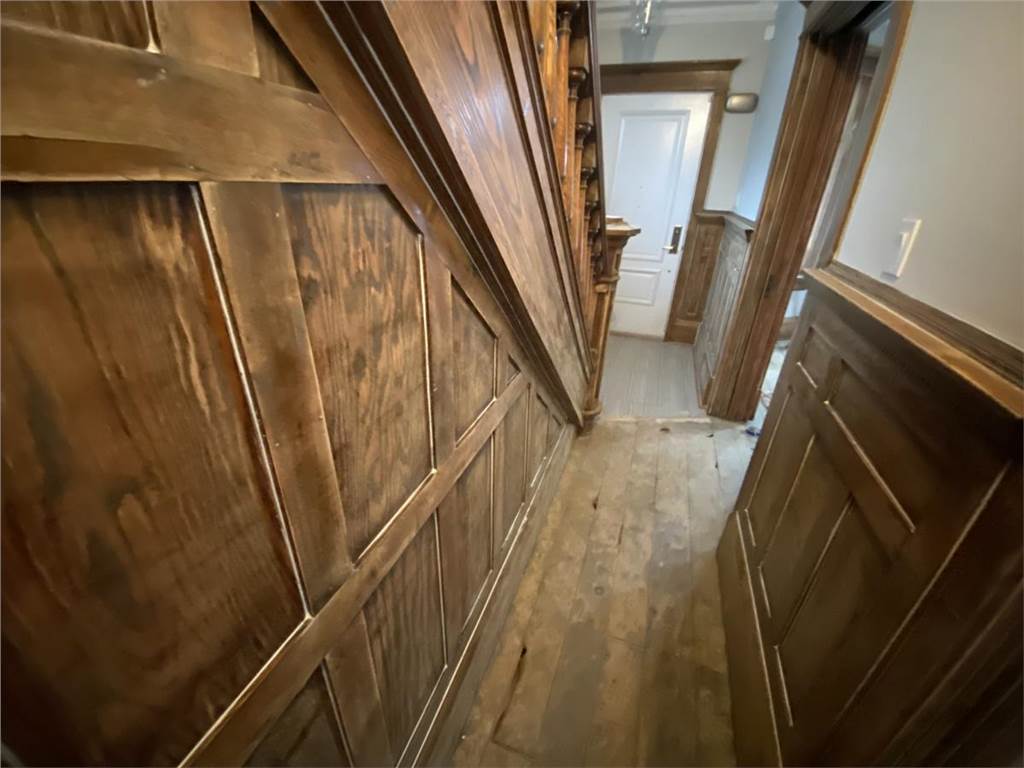
Painting Wood With Acrylic Paint
On sale you can find a huge selection of very different compositions. But which one is suitable for painting wooden stairs? To answer this question, you need to consider the types of paints used for wood:
Liquid oil. It consists of drying oil, stabilizers and coloring pigment. It does not have a strong odor, is economical, has a rich color palette and is consumed economically. But the tree does not breathe under such paint. The resulting surface cannot withstand mechanical damage, it is quickly erased and lost.
Alkyd: Pentaphthalic varnish based, with added coloring pigment and antiseptic additives. It dries quickly. The finished coating is elastic and resistant to mechanical damage, durable. Alkyd paints are inexpensive and have a rich color palette.
Acrylic: Produced on the basis of acrylic resins. They are non-toxic, do not have a pungent odor, dry quickly, are resistant to wear, have a rich color palette, do not fade over time. The tree breathes under such a cover. It has a service life of up to 20 years.
The criteria for choosing a particular type of paint for a wooden staircase are as follows:
Floor load: If stairs to the second / third floor are used frequently, a wear-resistant coating is chosen.
Types of wood. Pine floor can and should be painted, larch boards have a beautiful pattern, so it is better to choose a colorless or colored varnish.
Presence of ventilation: Stairs, as a rule, are located near the entrance area, which means that there should be no problems with ventilation. Therefore, you can choose any paint.
Cost.: The issue of savings is especially relevant if a lot of money has been spent on the repair or construction of a house. In this case, you can choose cheaper paintwork materials for the stairs, but not at the expense of the quality of the finished coating.
Wooden Stair Painting Techniques
Painting a wooden staircase takes place in 2 stages. This is the preparation of the base and directly opening the handrails, railings, steps with varnish or paint. The first stage is very important, if you want to get a beautiful and smooth staircase, you can not do without it.
Base preparation
For work, you will need a solution for putty on wood or alternative methods of sealing cracks (wood chips, wood dust mixed with colorless varnish), an antiseptic primer, an iron brush, a spatula, sandpaper .
The technology for preparing the base with your own hands is simple:
Clean the debris from the stairs and wash it with water. Then wait for it to dry completely.
Treat the steps with old paint stripper. Use a spatula to remove the swollen coating. Remove those that do not rise with an iron brush.
Clean the steps, railings and handrails with sandpaper, or better two - first 80, then 100, remove dust with a brush, vacuum the steps separately.
Fill the cracks. Putty will not take long if the ladder is actively used. Try filling the cracks with chips. Take a piece according to the size of the hole, grease it with PVA glue and put it in place. Another way to seal cracks: mix wood powder with colorless varnish, seal the cracks with the resulting composition and wait for it to dry.
Sand again, now 120, dust and finish with zero. Ideally, both steps, railings and handrails should be "egg-smooth".
Apply an antiseptic primer to the ladder. Use a roller for this. Make sure the composition goes into all recesses and trims (if any).
Wait for the primer to dry.
Paint Coating
This is a very important moment. The appearance of the stairs and how well it will fit into the interior of the house depends on the quality of the coating. For work you will need paint and a brush / roller. You can use a spray gun (it is significantly more expensive than regular means for applying paintwork).
Open the box. Stir the paint thoroughly using a long, sturdy wooden stick. There should be no lumps in it.
If the composition is too thick, dilute it with solvent.
Dip a brush or roller into the paint. Start coloring. All movements should be along the grain. After priming, the paint should not be absorbed too quickly. If you notice the composition getting into the wood like a sponge, paint the entire staircase and let the first coat dry.
Reapply the paint. Pay special attention to the joints of the handrails / floor, the handrails / balustrades, as well as the various gutters and wavy lines (if the stairs have curved elements).
Recommendation! After the paint has dried, open the ladder with clear varnish. This will increase the strength of the coating. Alternatively, paint only the steps and open the railings and balusters with varnish.
Varnishing
The preparatory work before such a finish is somewhat different. Grinding is performed only once before it is first opened. This is because the varnish inevitably raises all the villi on the surface. Sanding between layers will be required (sandpaper 180 - 220), and for the first layer it is better to use a special primer varnish.
Note: After removing the floor covering, stairs are always a pathetic sight. It looks much worse than it did after removing the old paint. Do not worry. A second coat of varnish placed on a properly prepared surface will do the trick.



